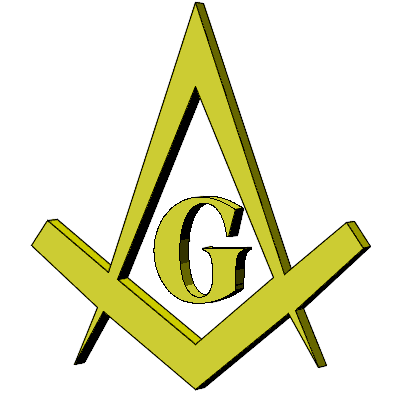masonic lesson #4
SYMBOLS IN MASONRY
Symbols and Symbolism are fundamental to an Order.
The United Grand Lodge of England in its 1929 public statement of Basic Principles refers to the Craft Degrees as the Symbolic Degrees.
Albert Pike, a distinguished American Mason of the last Century, said, “Symbolism is the soul of Masonry with every symbol the mute teacher of morality”.
Symbolism has had a long history. It has existed for maybe 5000 years while Masonry has had a history of six Centuries. Yet Symbolism has been a prominent feature of Freemasonry for only about 200 years.
The Regius Poem of about 1390 and the Cook Manuscript of about 1410 are the oldest existing Masonic documents, which mark the beginning of our Craft history. They were written specifically for the instruction of Masons, and while they enjoin many moral precepts, they contain no symbolism at all. Historic evidence indicates that Symbolism was introduced into Freemasonry in the 18th Century. Knoop & Jones in the Genesis of Freemasonry state, “It was almost certainly not until the second half of the 18th Century that Freemasonry had been so modified in character that it could justly be considered a peculiar system of morality, veiled in allegory and illustrated by symbols”.
The first suggestion of the symbolic use of Working Tools is contained in the instructions for constituting a new Lodge in Anderson’s Constitutions of 1723. There it is told that there shall be presented to the new Master “the Instruments of his office, not all together, but one after another and, after each of them, the Grand Master, on his Deputy, shall rehearse the short and pithy charge that is suitable for the thing presented”.
The early Masonic Catechisms, which had their vogue in the first half of the 18th Century when there was a growing public interest in Freemasonry, contain symbolic questions and answers concerning the height of a Lodge, the number of pillars in a Lodge etc, – but no moralising on, for example, the Working Tools, as these were then merely ornaments of the Lodge.
Indeed, it was not until Lodges had progressed from being mainly convivial societies for discussing architecture and geometry to becoming interested in the inculcating of morality that there was any scope for symbolism.
William Calcott – 1769 – was probably the first writer to explain the symbols of the Craft, though William Hutchinson more fully and enthusiastically discussed the subject in his book “The Spirit of Masonry” in 1775. Undoubtedly, his work did much to elevate Freemasonry and to extend the use of symbolism in its workings. Indeed, a prominent Masonic authority said, “Calcott opened the mine of Freemasonry, and Hutchinson worked it”. William Preston in the second half of the 18th Century likewise did much to establish the use of symbolism as part of the system of Masonic moral instruction.
Over the latter part of the 18th Century the number of symbols adopted by the Craft was very high. So numerous were they that when the two rival Grand Lodges of England came together in 1813 many symbols were dropped from English Freemasonry on the grounds that they were unnecessary or that their significance was not fully understood. Included among these were the Beehive, representing industry and cooperation, Book of Constitution guarded by the Tyler’s Sword (silence and circumspection); broken column (untimely death); chalk, charcoal and clay (freedom, fervency and zeal); high hills and low vales (requirement of secrecy); key (tongue, and hence discretion in speech); hour-glass and scythe (life and time); lion’s paw (strength); pot of incense (pure heart); trowel (generous heart, which alone can spread the cement of Brotherly Love); broached thurnel (possibly the predecessor of the perfect ashlar); bone box or worry box (mouth and teeth that holds the tongue that could be loose in utterance); pyramid (immortality); clasped hands (fidelity and trust).
As Masonry had not come to Australia by that time, these discarded symbols have never had a place in Australian Masonic practice, although some of them are currently used in America.
The purpose of Masonic symbols was, and essentially is, to teach simple and pure truths. Not only are they used to convey moral instruction but also to assist comprehension of the abstract, for example, a perpendicular line teaches moral rectitude, a circle drawn by compasses that we should keep our desires within due bounds, the gavel the need for removing excrescences, ie., correcting irregularities in conduct.
Some excellent Freemasons seek to know the Order by searching for and finding what they believe to be lost or hidden meanings of its tenets and symbols. Often they travel into fields irrelevant to Freemasonry. Although no Masonic irregularity is incurred in such interpretations it would be well to listen to the advice of Bro. Harry Cart of Quatuor Coronati Lodge, London (the world’s premier Lodge of Research) who wrote, “To find your own interpretation of our symbols is the very best kind of Masonic exercise. The only danger is that it may lead you too far from the simple explanations that were intended. Many of us have seen extraordinary and far-fetched examples that have no relationship to Freemasonry, and which could never have been in the minds of those who compiled or approved the actual words and procedures that are in use today”.
Bibliography: Knoop & Jones The Genesis of Freemasonry
Symbols Transactions of the Research Lodge of
New South Wales – L.M. Sherwood
February, 2000
Ref: g:\genoffic\grand library\lodge talk no 4.doc



